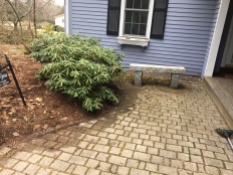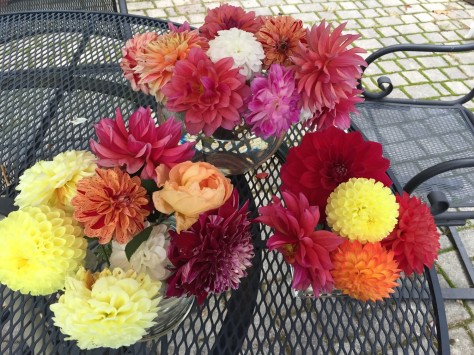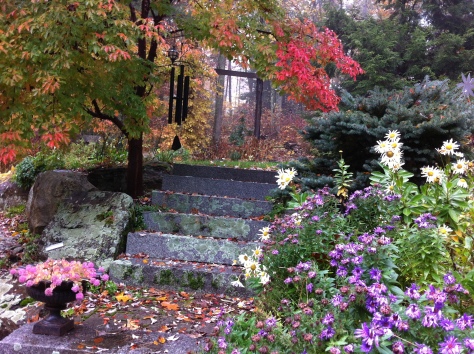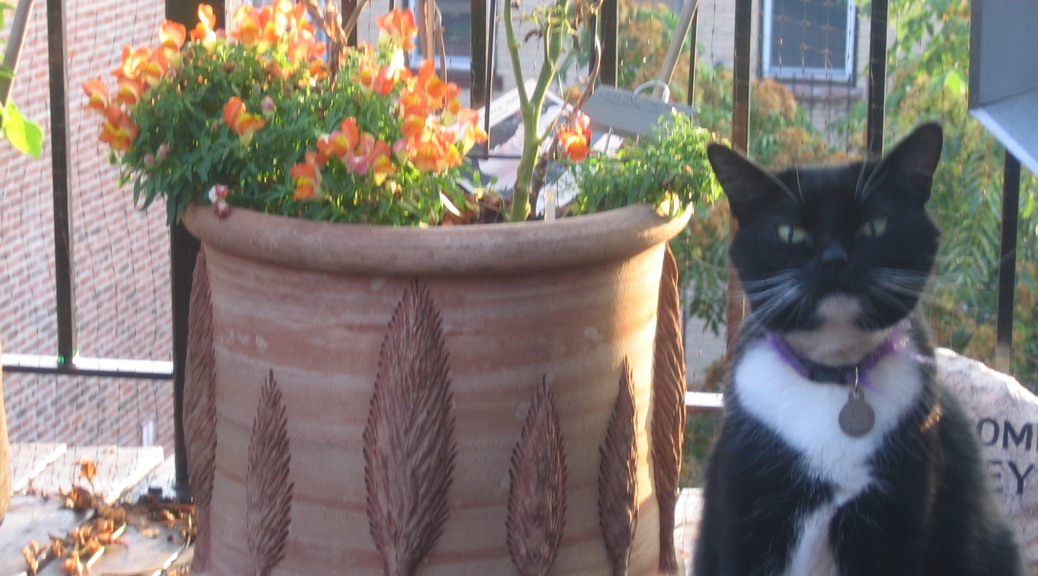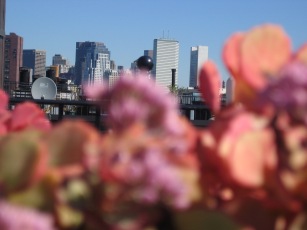These plants are tried and true for full sun roofdeck. They do require water! Based on 10 years gardening on my South End, Boston roofdeck.
Perennials (come back every year)
- Blueberries – great berries and fall color, underplant with alyssum and lantana
- Shrub roses – white seafoam and pink fairy.
- Scabiosa – purple round, spiky flowers
- Coreopsis – many varieties – prolific bloomer all summer
- Heliopsis Lorraine Sunshine – underplant with annuals blue Felicitas and lobelia
- Coneflower/Echinacea – white, pink
- Rudbeckia – many varieties
- Indian Blanket Flower “Gaillardia artista” summers kiss – with lavender
- Daisies- many perennial varieties
- Walker’s Low – Nepata Faassenii…beautiful grey/green leaves with continuous flowering blue spikes. Cut back if flowering stops
- Susanna Mitchell – Anthemis Hybrid…delicate foliage with daisy flowers that close at night
- Lavender Provence, Hidcote (sometimes these just die over winter – not super hardy)
- All sedums – many, many varieties
- Daylillies Stella d’Oro daylilies (yellow), planted with lavender, lamium, and purple/white violas
- Nicotiana – several varieties/varying heights – white flowers
Annual Vines
- Mandevillas – these come in climbing vines (pink, white or red) or red bush varieties. Super bloomer
- “Candy corn” vine available from Hillbilly Acres nurseries…underplant with yellow lantana and alyssum
- Thunbergia (yellow flower) …underplant with alyssum, brachyscon, zinnias
- Morning Glories – I plant them everywhere – bloom in morning late summer and fall. Best bloomer by far is variety “Heavenly Blue”. Can be invasive at ground level.
- Passion Flowers – totally beautiful flower, climbing vines in a variety of colors
Annuals (Must buy every year)
- Arctotis Graadis – beautiful white flowers with silver leaves
- Verbena
- Hibiscus – these can be trimmed to be like trees or are in bush form. Continuous bloomer. Tropical – bring indoors in winter…condition slowly to put outside again
- Zinnias – Always a winner all summer
- Double impatients – I am not a big fan of normal impatients but the double ones are fantastic, vibrant colors – a standard for me. Do better with partial shade but recover well after they are wilted.
- Bacopa – can be good bloomer all summer but may die off in heat spell/needs water
- Gaura Whirling Butterflies..G. Lindheimeri – Another standard planted with Euphorbia diamond frost
- Lantana –One of the best heat tolerant plants, variety of colors
- Allysum – totally heat tolerant and small white blooms all summer, low 2”
- Brachycon (Asteracea Brachyscome, lemon twist swan river daisy) – fine leaves and small yellow flowers, great for overflowing containers
- Double petunias – wave variety – these are the only plants that have survived in 5” deep hanging boxes
- Coleus – plant a mix of them in a container, don’t mix with other plants as they’ll take over
- Spearmint – great for mojitos
- Sunvitalia – very heat sensitive, cannot dry out
- Osteospermum – white with purple centers is my favorite
- Argyanthemum – prefer cooler weather so may die in hot spell
- Felicita – small blue flower (Felicia amelloides) good for underplanting











